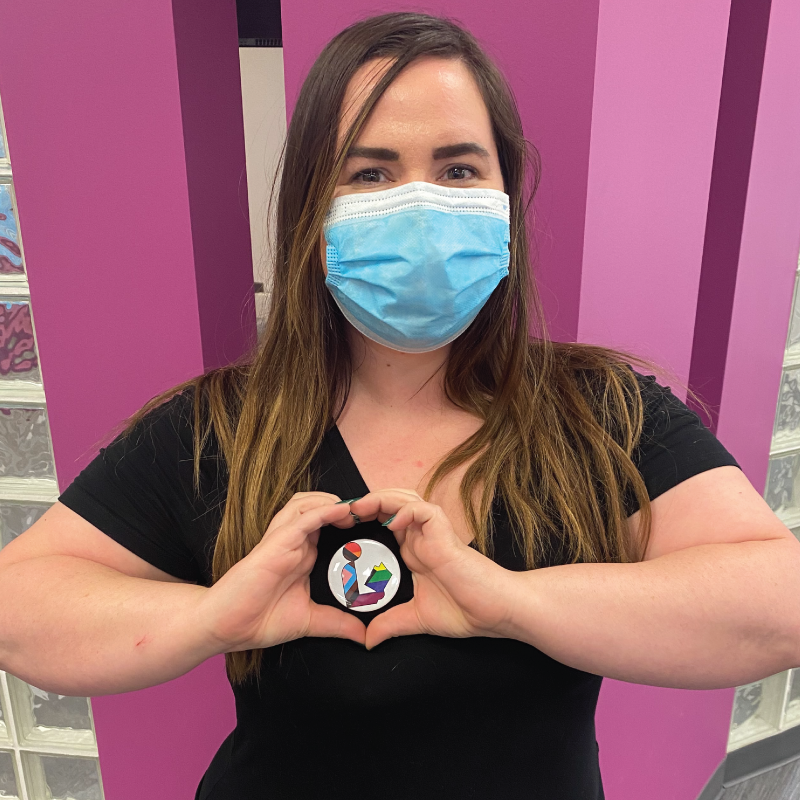A Brief History of Pride
As we celebrate Pride in 2021, we would be remiss to ignore the historical context in which we celebrate and provide allyship to LGBTQIA2S+ communities and those who identify as LGBTQIA2S+.

June 28, 1969 was a pivotal point in history for LGBTQIA2S+ in North America. Early in the morning police raided the Stonewall Inn - a safe haven for members of the LGBTQIA2S+ community (notably homeless gay youth) in Manhattan. This raid escalated with patrons of Stonewall clashing with the police and six days of demonstrations. A similar event in Canada, the Toronto Bathhouse Raids, occurred February 5, 1981 in four bath houses in downtown Toronto leading to the arrest of over 306 men (many of those arrested were found to be innocent). Public outcry over the treatment of LGBTQIA2S+ community members versus their counterparts in private clubs and heterosexual bath houses was prominent in demonstrations, participants describing police brutality and violation of civil liberties as constant and discriminatory. In July 2005 the Civil Marriage Act was given royal assent and legalized same sex marriage federally in Canada - just about 16 years ago.
Many attribute movements stemming from the Stonewall Riots originating with and rooted in the actions of LGBTQIA2S+ community members who were BIPOC (Black, Indigenous and People of Colour), such as Stormé DeLarverie, Marsha P. Johnson and Sylvia Riveria (pictured below), Miss Major Griffin-Gracy, and many others. Movements include supports for homeless gay/trans/LGBTQIA2S+ youth, advocacy in the AIDS epidemic, and decriminalization and legalization of LGBTQIA2S+ activities and marriage. Much of what has been done is by activists and community members that inspire change.

As we celebrate, we do so in memory of those who are no longer with us, those who celebrate with us and those who aren’t able to freely celebrate with us as themselves. We celebrate their strength and resilience, and work to call injustice out in 2021.
As it is, I don’t always have the right answers. I will always seek to find more information and become more inclusive. As an ally it is a responsibility to share that information and help provide more access to learning - I hope that by sharing this information, I am able to take some of the burden of education and the emotional/mental load off of those with lived experience without removing their unique voice. I will always listen with humble ears to those who would like to pop in and share their experiences or add their perspectives. For more information on how to become an ally, read this blog post.
LGBTQIA2S+ Definitions
LGBTQIA2S+
stands for Lesbian, Gay, Bisexual, Transgender, Questioning, Intersex, Asexual and Two-Spirit. The terms used to describe gender identities and sexual orientations are constantly changing and being updated to better represent people.
Sexual Orientation & Gender Orientation
Sexual orientation is who you go to bed with; gender orientation is who you go to bed as. These are independent terms. A comprehensive list of Sexual Orientations can be found here.
Transgender
is a gender identity that does not correspond with the gender assigned at birth.
Cisgender
is a gender identity that does correspond with the gender assigned at birth.
Intersex
means you’re born with biological traits that are outside the strict male/female gender binary (such as anatomy, chromosomes, and/or hormones). Examples include Turners Syndrome, Androgen Insensitivity Syndrome, and Klinefelters Syndrome. Being intersex is not the same thing as being transgender.
Non-binary
typically is descriptive of someone whose gender identity is not exclusively male or female.
Genderqueer
typically is outside of, in-between, or fluctuating between the binary gender categories of male and female. Gender queer relates to the spectrum of both Gender Identity as well as Gender Expression - that is, they may move fluidly between the identities of male and female and separately may move fluidly between masculine expression and feminine expression.
Two-Spirit
refers to Indigenous people who express their gender or sexual identities as different from others. Not all Indigenous individuals who are not Cisgender or Heterosexual will identify as Two-Spirited, but all Two-spirit individuals identify as Indigenous. Some nations hold space for more than 2 genders, such as the Díne, The Anishnaabe, and the Lakota.

Works Consulted
https://prideportland.org/heroes-of-the-stonewall-...
https://www.thecanadianencyclopedia.ca/en/article/...
https://laws-lois.justice.gc.ca/eng/acts/c-31.5/pa...
https://www.hiv.gov/hiv-basics/overview/history/hi...
https://isna.org/faq/what_is_intersex/
https://isna.org/faq/conditions/klinefelter/
https://isna.org/faq/conditions/ais/
https://isna.org/faq/conditions/turner/
https://www.healthline.com/health/transgender
https://www.healthline.com/health/transgender/gend...
https://www.healthline.com/health/transgender/nonb...
https://nursinglicensemap.com/blog/the-importance.../

 Posted on 29 June 2021 by Tiersa.
Posted on 29 June 2021 by Tiersa.